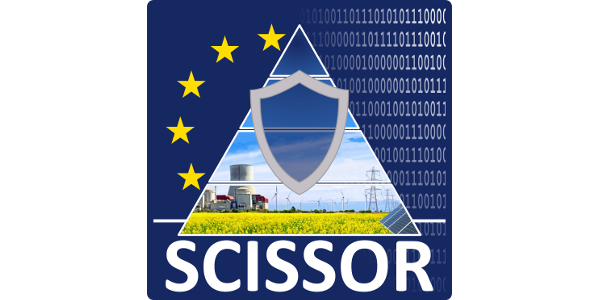HORIZON 2020 (H2020)
2015 – 2017
SCISSOR designs a new generation SCADA (supervisory control and data acquisition) security monitoring framework.
In traditional industrial control systems and critical infrastructures, security was implicitly assumed by the reliance on proprietary technologies (security by obscurity), physical access protection and disconnection from the Internet. The massive move, in the last decade, towards open standards and IP connectivity, the growing integration of Internet of Things technologies, and the disruptiveness of targeted cyber-attacks, calls for novel, designed-in, cyber security means. Taking an holistic approach, SCISSOR designs a new generation SCADA (supervisory control and data acquisition) security monitoring framework, comprising four layers:
- A monitoring layer supporting traffic probes providing programmable traffic analyses up to layer 7, new ultra low cost/energy pervasive sensing technologies, system and software integrity verification, and smart camera surveillance solutions for automatic detection and object classification;
- A control and coordination layer adaptively orchestrating remote probes/sensors, providing a uniform representation of monitoring data gathered from heterogeneous sources, and enforcing cryptographic data protection, including certificate-less identity/attribute-based encryption schemes;
- A decision and analysis layer in the form of an innovative SIEM (Security Information and Event Management) fed by both highly heterogeneous monitoring events as well as the native control processes’ signals, and supporting advanced correlation and detection methodologies;
- A human- machine layer devised to present in real time the system behavior to the human end user in a simple and usable manner. SCISSOR’s framework will leverage easy-to-deploy cloud-based development and integration, and will be designed with resilience and reliability in mind (no single point of failure).
SCISSOR will be assessed via:
- An off-field SCADA platform, to highlight its ability to detect and thwart targeted threats, and
- An on- field, real world deployment within a running operational smart grid, to showcase usability, viability and deployability.
‘Data and Multimedia Processing’ team, headed by Professor Andrzej Dziech, is leading the Work Package dedicated to monitoring layer technologies and solutions. The following components will be designed and developed by the team in this Work Package:
- Mechanisms for acquisition and transmission of video data from multiple cameras of different types (CCTV, infrared)
- Automatic recognition of objects and their characteristics and positions
- Event Analysis System – the development of requirements and methods of data analysis and decision-making with regard to the integration of information from multiple sources
- Privacy protection of processed and transmitted digital data using digital watermarks
- Event Analysis System – integration of algorithms, implementation and evaluation of a module to generate data for visualization and decision-making;
- An integrated system for processing and storing data.
AGH team will be also engaged in other activities, including:
- System control and monitoring
- Validation and demonstration performed on advanced SCADA platform in real world deployment
AGH teamwork on video surveillance has a significant practical interest, and will permit to intensify cooperation with the industry.
Partners:
- ASSYSTEM ENGINEERING AND OPERATION SERVICES
- UNIVERSITE PIERRE ET MARIE CURIE
- SIXSQ SARL
- CONSORZIO NAZIONALE INTERUNIVERSITARIO PER LE TELECOMUNICAZIONI
- RADIO6ENSESRL
- SALZBURG RESEARCH FORSCHUNGSGESELLSCHAFT M.B.H
- KATHOLIEKE UNIVERSITEIT LEUVEN
- SEA SOCIETÀ ELETTRICA DI FAVIGNANA SPA







